Slobot About Town CXVIII:
 |
 |
Slobot goes to New Orleans, Louisiana!
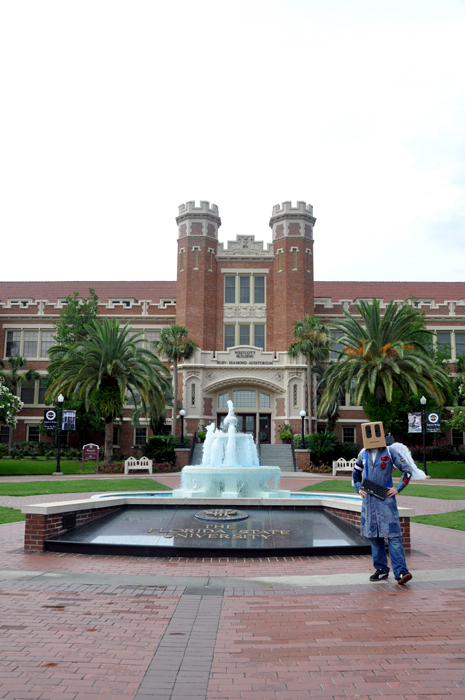
Slobot was hanging around the Westcott building at The Florida State University.

Slobot loves FSU! It is - after all - where he was conceived.
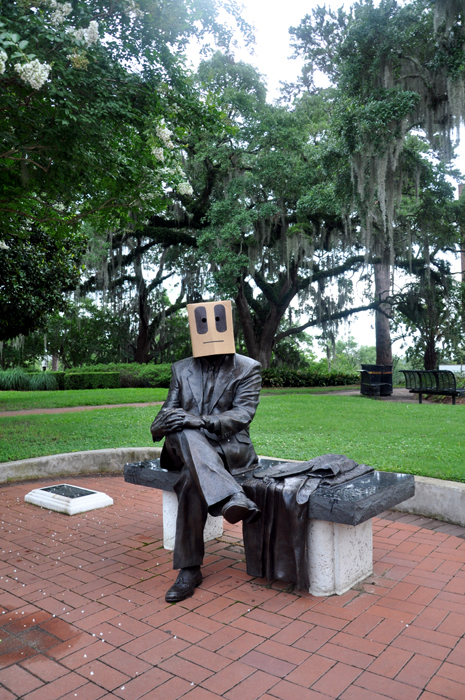
Slobot could still picture his ferrous father, sitting as he would by the FSU fountain.
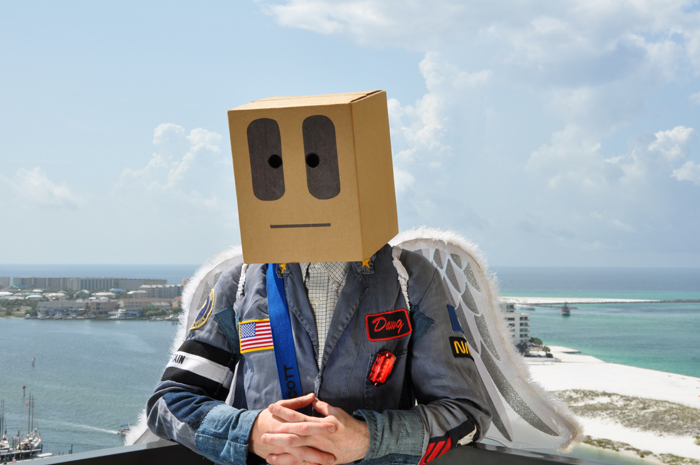
As much as Slobot enjoyed reminiscing, he decided, like so many Americans before him, to go west.
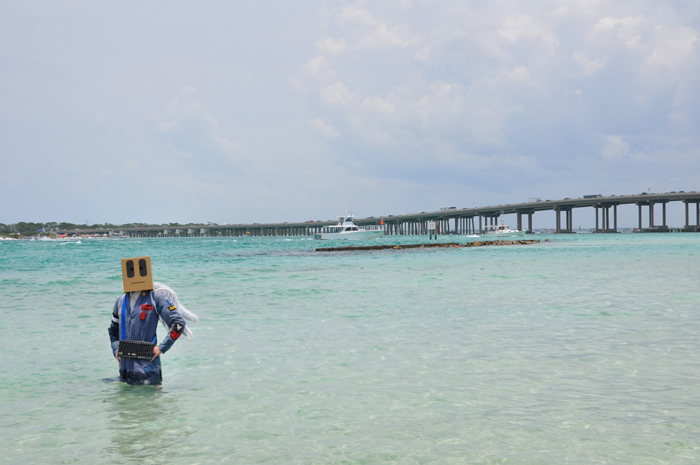
And go west Slobot did...

all the way to Destin, Florida.
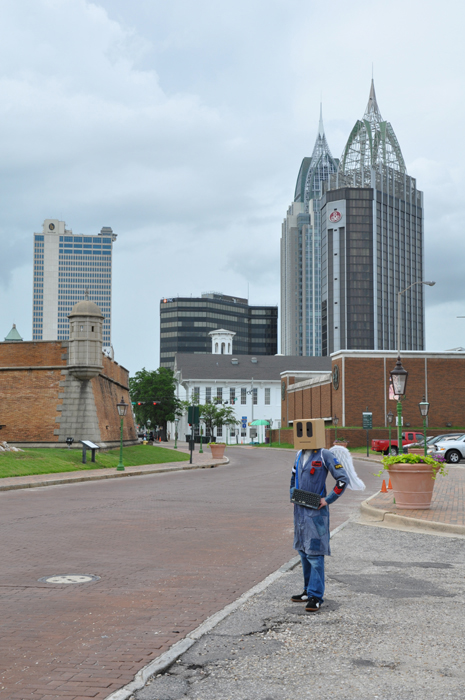
From Destin Slobot meandered on to Mobile, Alabama...
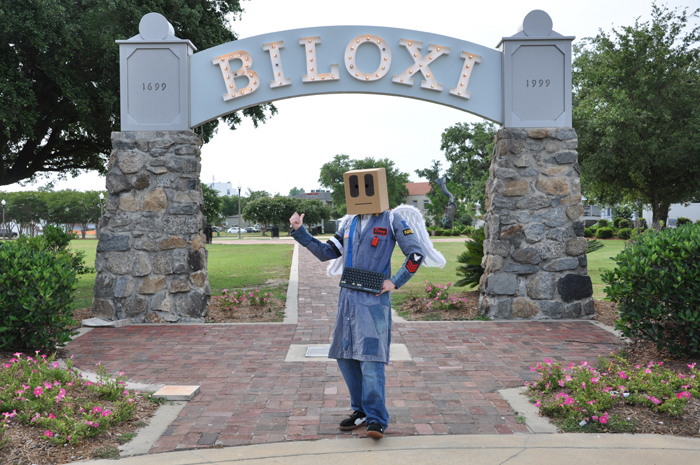
and Biloxi, Mississippi...
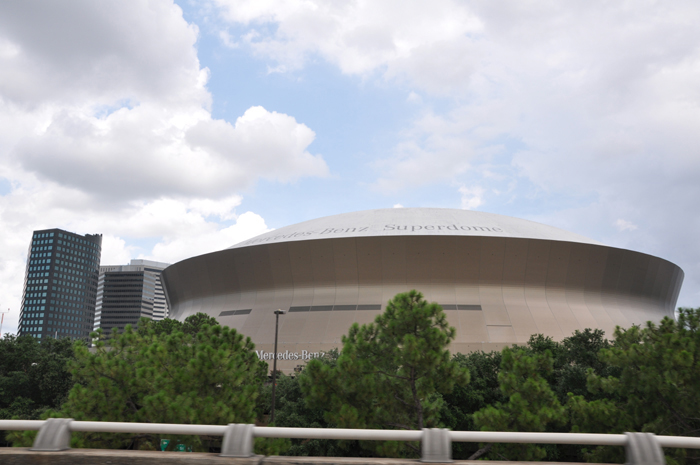
before finally arriving in New Orleans, Louisiana!
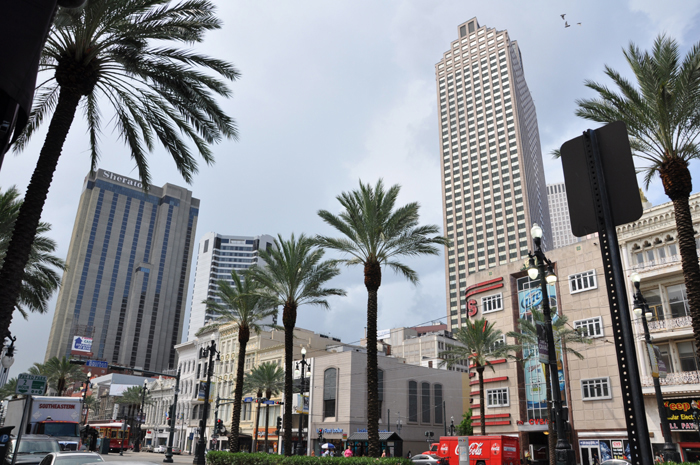
Slobot marveled at the buildings...
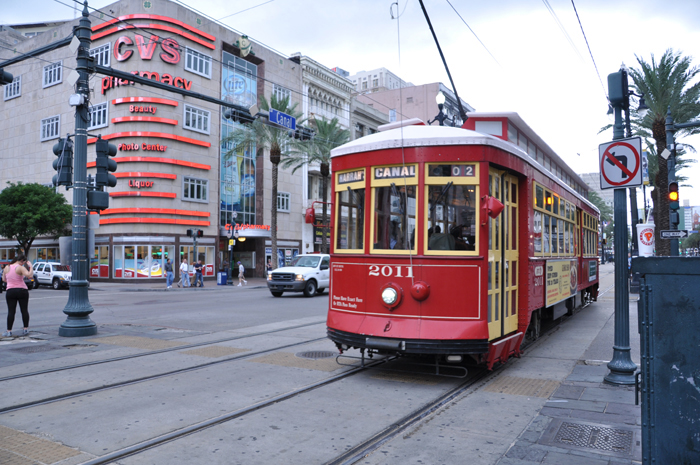
and the red streetcars of Canal Street.
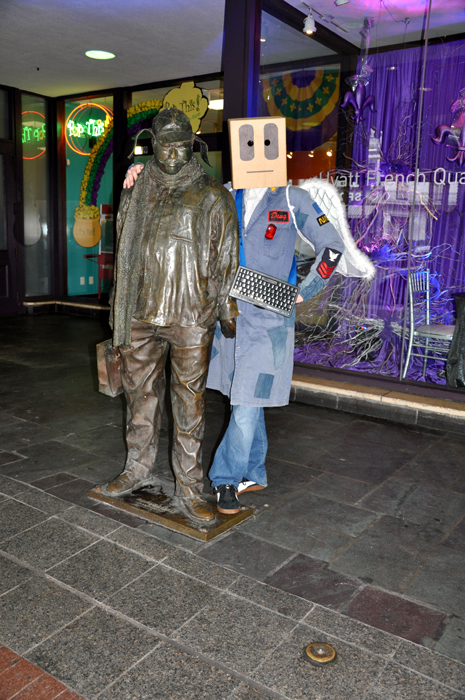
Also on Canal Street stands a bronze statue of Ignatius J. Reilly. Reilly looks here as he did when portrayed by actor John "Spud" McConnell in the play of the novel, A Confederacy of Dunces. |

Slobot, in rereading A Confederacy of Dunces,
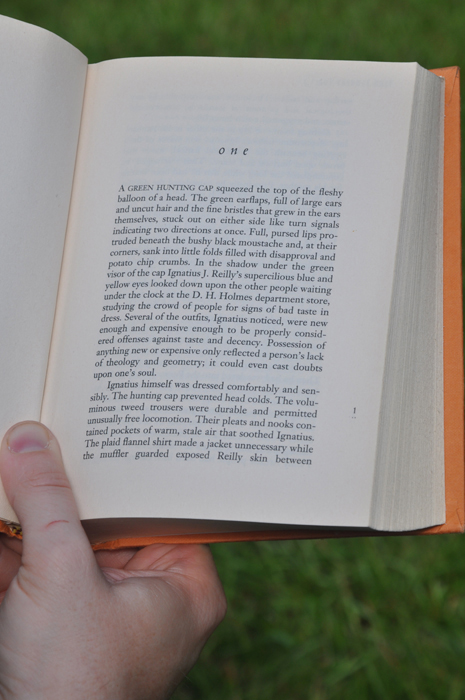
noted the following passage: "Ignatius J. Reilly's supercilious blue and yellow eyes looked down upon the other people waiting under the clock at the D. H. Holmes department store, studying the crowd of people for signs of bad taste in dress." The aforementioned D. H. Holmes department store once stood on Canal Street; today it is the home of the Chateau Bourbon Hotel. |
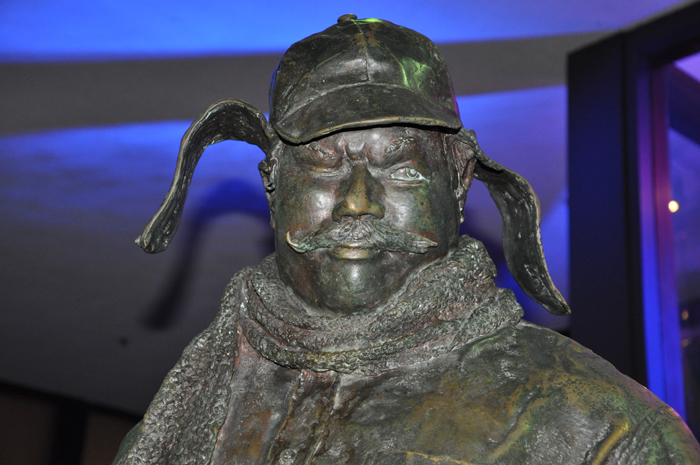
Ignatius is described, in part, as being "dressed comfortably and sensibly. The hunting cap prevented head colds. The voluminous tweed trousers were durable and permitted unusually free locomotion." |
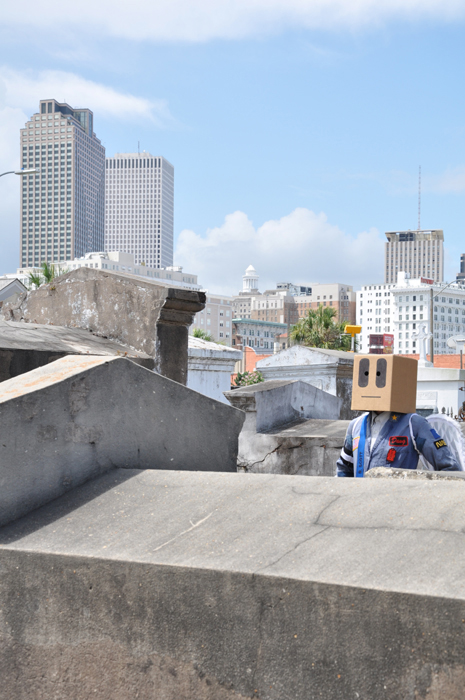
As Slobot wandered the city of New Orleans, he found himself surrounded by vaults. Tradition dictates that bodies be placed in above ground vaults, and so Slobot found himself lost in a sort of labyrinth of death. |
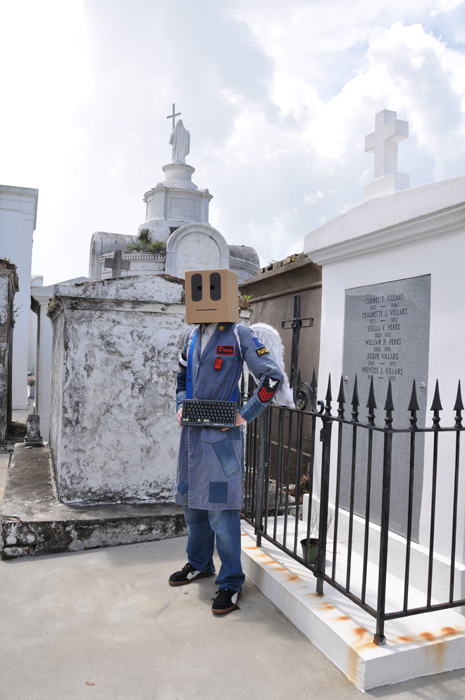
This particular cemetery was the Saint Louis Cemetery No. 1, the oldest extant cemetery in New Orleans. St. Louis Cemetery No. 1 was established by a royal Spanish land grant on August 14, 1789. The cemetery was originally much larger and outside the city limits of New Orleans. Civilization has, in the ensuing years, encroached upon the cemetery. Though the cemetery is a Catholic one, maintained by the Archdiocese of New Orleans, there is a section set aside for Protestants. |
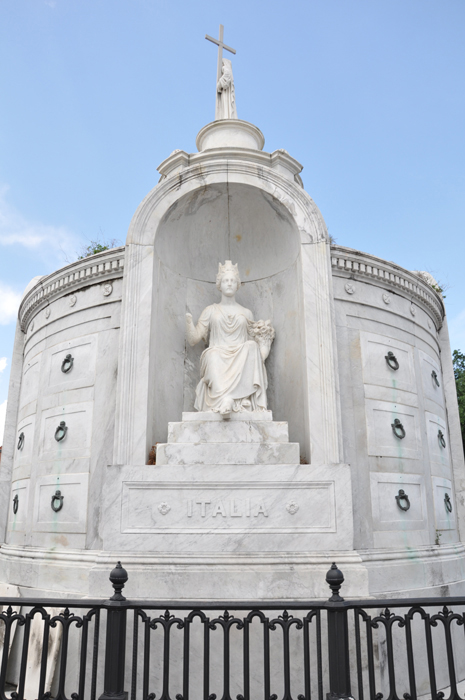
This is the Italian Mutual Benevolent Society's tomb, designed by Pietro Gualdi in 1857. Bodies would be deposited in the "drawers" of the tomb until skeletal, at which point the bones would be placed within the tomb's basement. The female figure here is featured prominently in the film Easy Rider. |
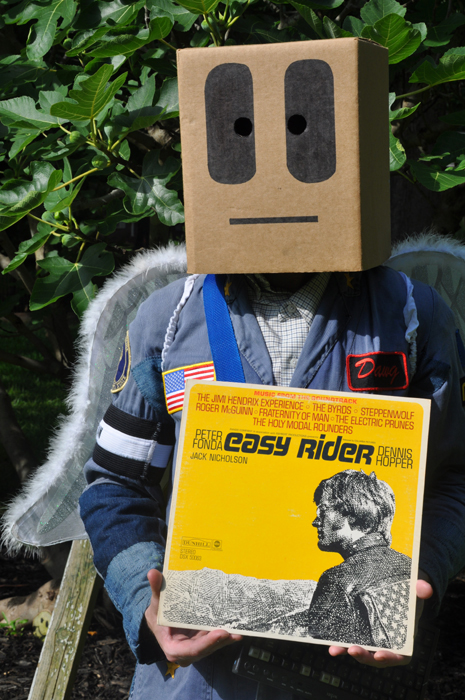
In Easy Rider Peter Fonda's Captain America character is seen in her arms during what can only be described as a bad trip. The film crew did not have permission to shoot in the cemetery but did so regardless. Peter Fonda addressed the statue as if it were his mother who had taken her life by slitting her throat on her 42nd birthday. |
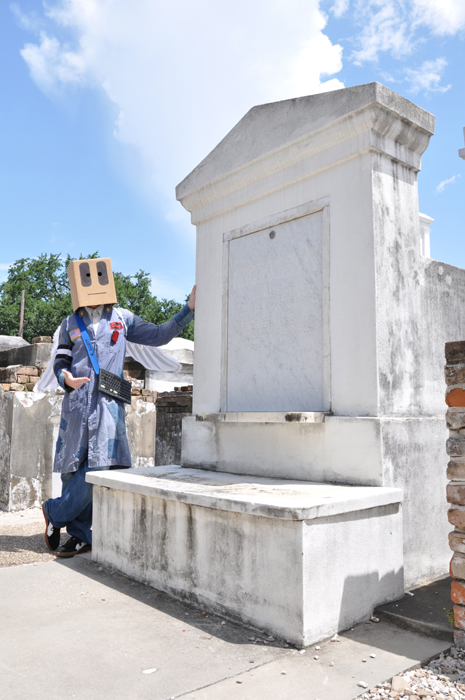
Many notable people rest in peace in this city of the dead.
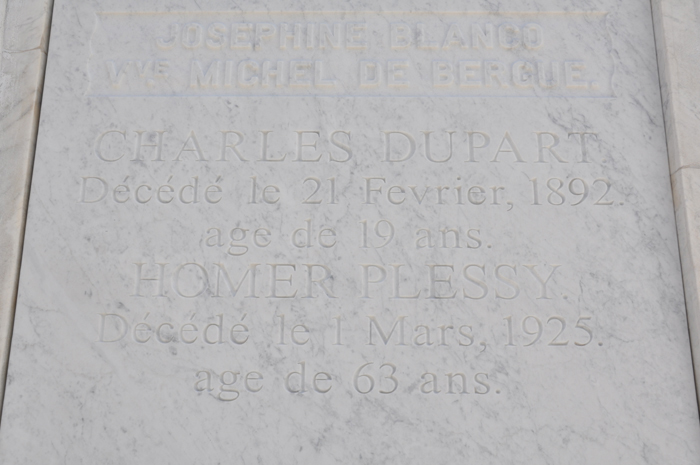
One of those is Homer Plessy who famously defied a Louisiana law that segregated railroad cars on the basis of race. Plessy, whose first language was French, today rests in peace in his family's vault in St. Louis Cemetery No. 1. |
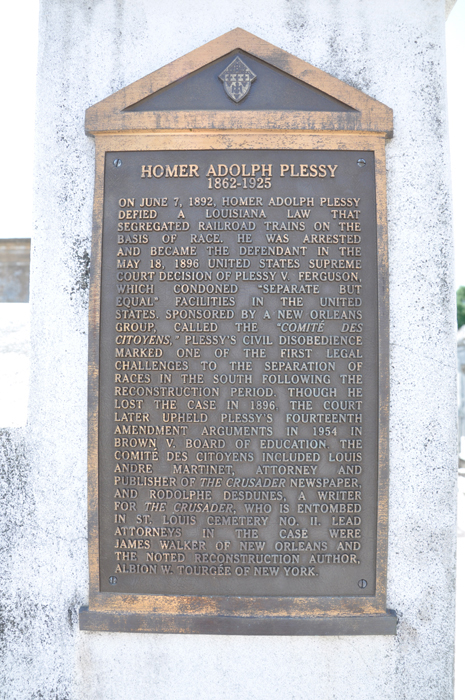
In the Supreme Court case that would follow, the court would condone "separate but equal" facilities in the United States. Segregation would, regrettably, be the norm throughout the southern United States until the Brown v. Board of Education decision in 1954. |
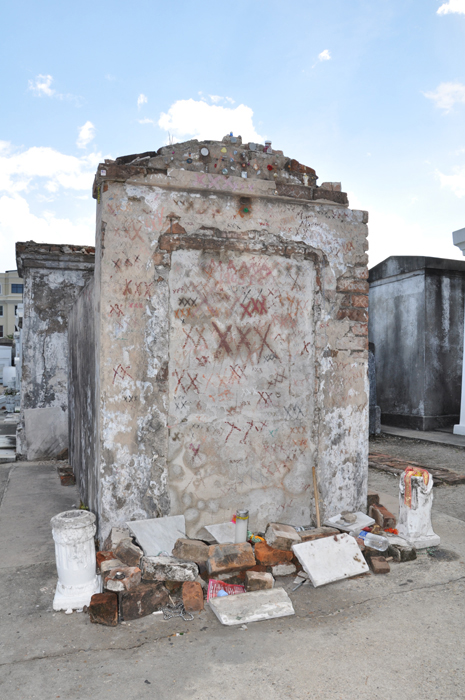
Some folks believe that unmarked vaults such as this one are those of Voodoo priestesses, and they leave tokens as tribute. Those same people make wishes and mark XXX if they believe their wishes have been fulfilled. |

This building is the Cabildo, the seat of municipal Spanish colonial government in New Orleans. In 1803 the Cabildo would host the Louisiana Purchase transfer ceremony. The building as it stands today was largely built between 1795 and 1799, though it was extensively rebuilt after a 1988 fire that destroyed the building from the third floor up. |
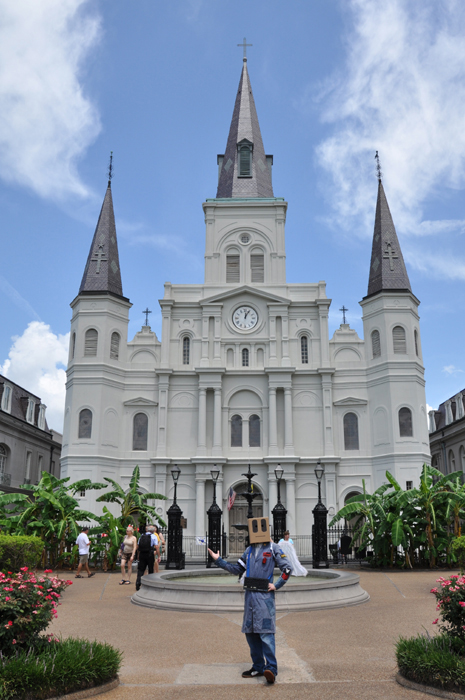
Adjacent to the Cabildo is the Cathedral-Basilica of Saint Louis, King of France (Cathédrale Saint-Louis, Roi de France). |
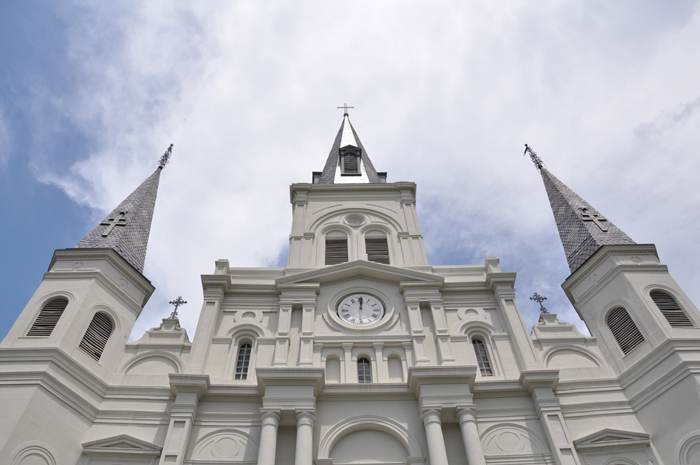
The St. Louis Cathedral is the oldest continuously running cathedral in the United States. The building as it stands today is largely as it has looked since 1850. |
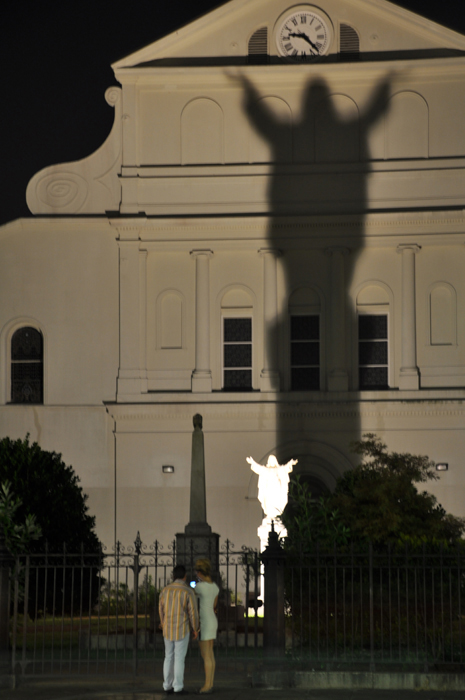
On the back side of the cathedral, there stretches an awe-inspiring shadow of Jesus.
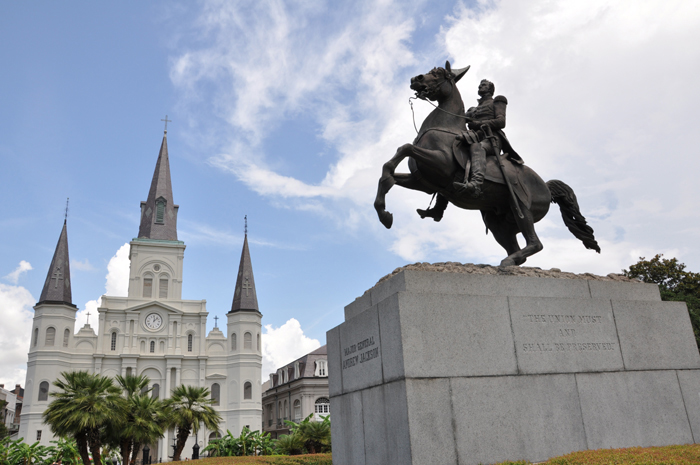
On the front side of the cathedral, there stands a statue of Andrew Jackson, hero of the War of 1812 Battle of New Orleans. The square over which he presides is appropriately dubbed Jackson Square. |
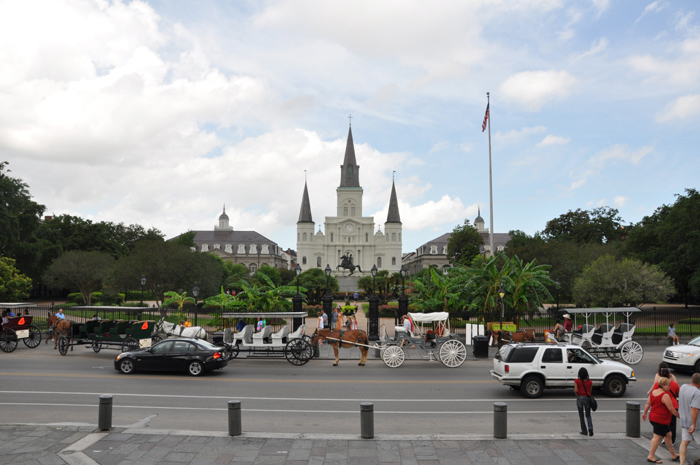
The cathedral and Jackson Square face the mighty and muddy Mississippi River.
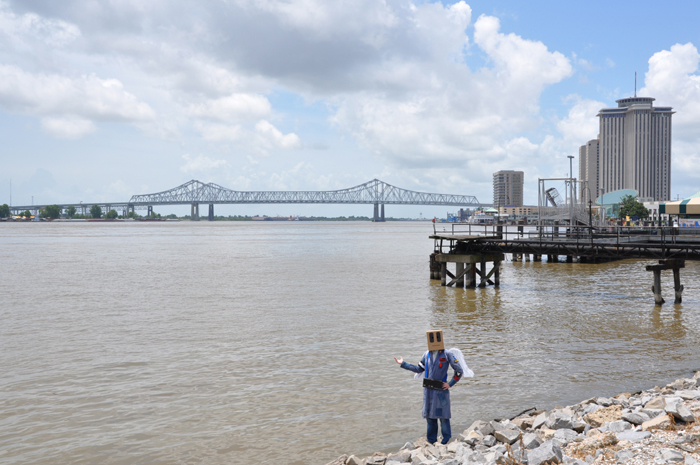
Slobot has long been fascinated by the big muddy old man river.
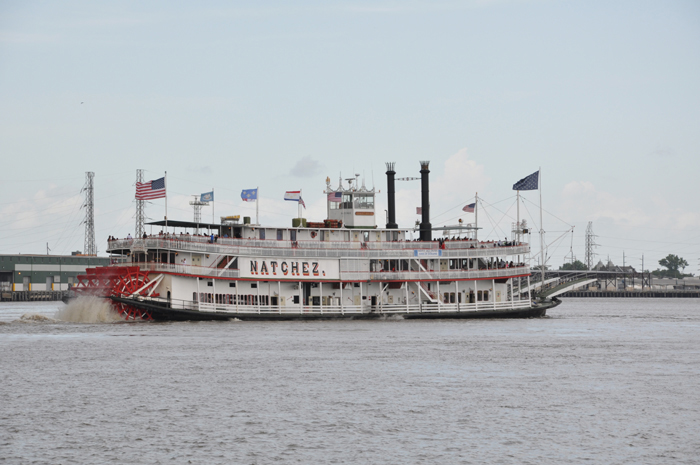
The S. S. Natchez IX, like her predecessors I - XIII, continues to steam up and down the Mississippi.

For better or for worse, one of New Orleans' most famous places is the Rue Bourbon. During the day it is pleasant enough, |
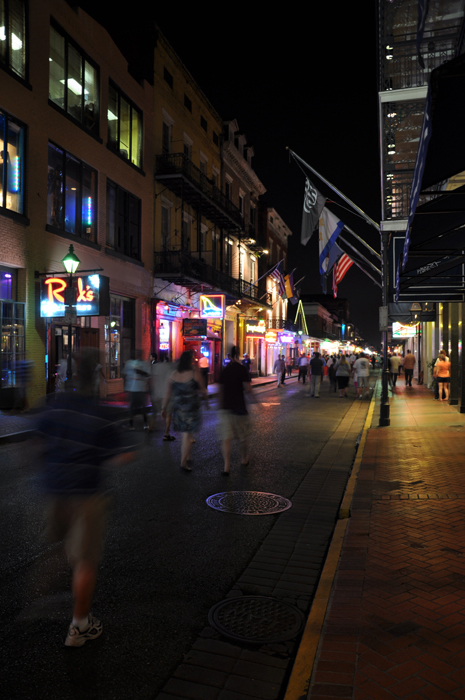
but as night descends...
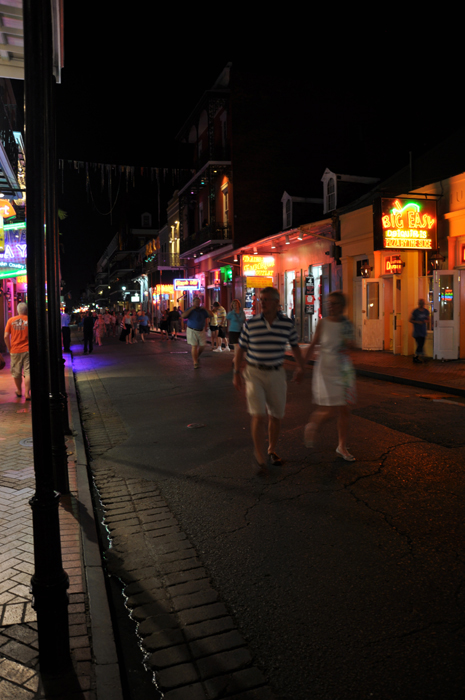
so do the party-goers,

and anything seems to go.
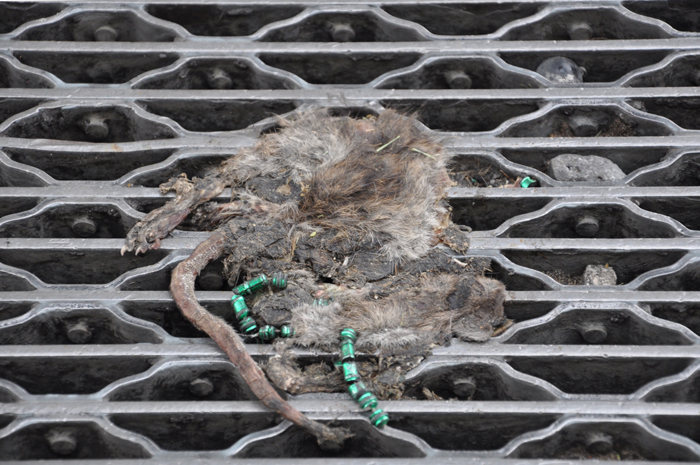
In the morning revelers find themselves smashed, not unlike this Marti Grat.
Slobot would like to thank the fine folks of New Orleans, the late John Kennedy Toole and YOU!
